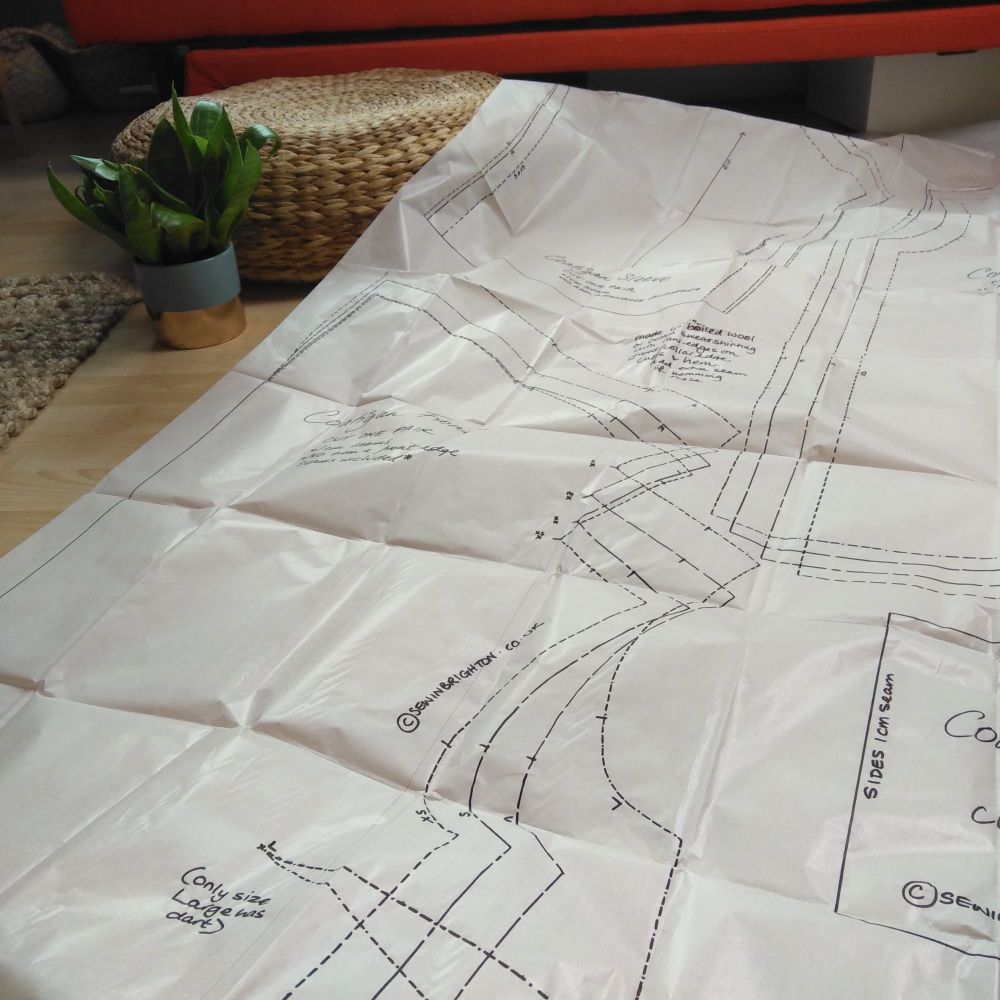Buying PDF sewing patterns - get them printed A0 size at a copyshop!
Posted on
If you've been trawling through Instagram and searching online for patterns over the last few years you'll have spotted that there are some fantastic clothing patterns being produced all around the world. Not all are available to buy as paper copies in the UK, but you can often purchase a PDF download version instead.

Traditionally, this meant printing off the pattern onto many sheets of A4 paper on your home printer and taping them all together - laborious! Plus printer paper is very stiff, which isn't ideal for pinning to fabric. For these reasons we wouldn't recommend using patterns made with printer paper to 'tissue fit' the pattern to your body to get the right fit prior to cutting in fabric. On top of the stiffness of the paper, parts can gape where taped, and getting your printer to print at the right scale can be tricky (TIP: choose 100% rather than fit to page). All over, not a fun process!
The great news is that now copy shops will print your pattern onto one large A0 size sheet, hurrah! But what on earth is 'A0' (i.e. A-zero) size paper? Well, it's 16 x A4 (and measures 84.1cm x 118.9 cm) - so you get to avoid taping ALL these together:


The printer we love using to print PDF patterns, specialises solely in printing sewing patterns - they are Fabulosew - Fabulosew.co.uk. They use a lovely quality tissue paper, enabling you to tissue-fit your pattern before cutting in fabric. They will post it to your door neatly folded in an envelope in a couple of days. Best of all, it's not expensive.

To find out how much your pattern will cost to print, you'll need to look at your PDF pattern notes to see whether it is 1x A0 sheet size or more. Our Coatigan PDF pattern is 2x A0, for example, as it's a knee length coat-cardi with a large shawl collar - so that takes up some paper. This is what the pattern will look like but on tissue paper (this is the original we created and had made into a PDF hence it being on thicker paper):

And here is the tissue version:

We recently ran a jacket making course and the patterns were 3xA0. A top might just be 1x A0. In the case of multiple A0 patterns, Fabulosew will print your patterns on several sheets. Sometimes the garment pattern pieces are longer than A0, like the 2xA0 size Dungaree pattern we use on our Dungarees Making Courses. In this case Fabulosew include joining marks, so you know where to stick the two tissue sheets together (just one edge to join rather than 16-32 edges or more when printing at home!). They also do 'oversize' printing, where patterns are wider than A0. For example VikiSews pdf patterns are 900mm wide. The pattern company will note that you need oversized printing. Vikisews say 'You will need a plotter printer that can print at least 900mm width' on the selling page of their patterns.
So when you're ordering at fabulosew.co.uk, you put in the number of A0 sheets your pattern is first, then scroll down to enter the number of copies of the pattern you would like. You probably only want one unless you're running sewing workshops like us!

Have a browse of PDF sewing patterns at fellow sewing school Guthrie Ghani here, or do a web search for PDF sewing patterns.
When you're ready to have it printed head over to Fabulosew.co.uk to print your pattern.
Once you have your pattern, if you need help deciding which size to make and a hand fitting it to perfection before cutting your lovely fabric, we can help! Our Stitch! General Sewing & Clothes Making Classes are on most days and will help you get your garment fitted and sewn just right - more details of the classes here.
Happy sewing all!













